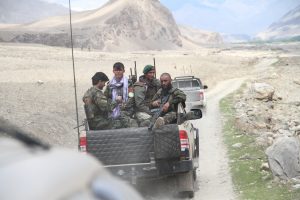Sherzod Boltaev bashfully walked through the door and sat on a chair facing a stale, yellowing wall. A table lamp standing on a shabby desk illuminated a tiny Afghan flag with obtrusive white light, making the small room in the prison run by the National Directorate for Security – Afghanistan’s main security and intelligence agency – all the more grim. Boltaev, a 38-year old lanky Uzbek with a patchy beard, looked anxious and reserved. He spoke with a voice so soft and quiet that it was barely discernible even amid the deep silence of the room.
Unlike many other detainees in the high security prison, Boltaev had willingly decided to abandon his fight. After Afghanistan’s president, Ashraf Ghani, promised mercy to those members of the Islamic State – Khorasan Province who turn themselves in, Boltaev felt that that it was the right moment to quit. He was tired, hungry, and unsure of what was to come.
It was autumn 2019 and in Afghanistan the Islamic State was losing its last stronghold in the mountains of Nangarhar, close to the Pakistani border. Many of its members fled or went into hiding; others were captured or killed by the advancing Afghan and American armies. Boltaev turned himself in at the beginning of November 2019. His pregnant wife and five children were taken separately, put onto a bus, and driven in an unknown direction. Boltaev has not heard from them since.
Boltaev, who was known as Najibullah Abdul Rahim – a nom de guerre he took when he joined the jihad – is one of hundreds of Uzbek nationals who over the years have passed through Afghanistan as part of the Islamic Movement of Uzbekistan (IMU). Their fight, which began in the 1990s in their homeland, saw them ally over the years variously with the Taliban, al-Qaida, and the Islamic State; splinter into factions; and finally sink into oblivion.
But while the IMU itself might no longer be an important player in the complex landscape of international jihad or pose a serious threat to Central Asian governments, it may yet be too soon to portend its total demise either.

































